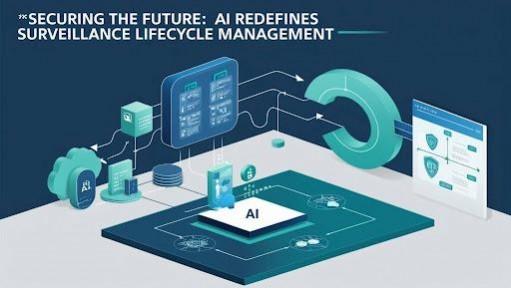
The Adaptive Security-Aware Platform Engineering (ASAPE) framework uses advanced AI to secure surveillance devices from design to decommissioning. Developed by researcher Jeesmon Jacob, it replaces reactive models with a proactive, human-aware approach that anticipates and prevents threats throughout the device lifecycle.
The Problem with Today's Surveillance Security
Billions of IoT surveillance devices are active worldwide, yet most organizations treat security as an afterthought. Vulnerabilities frequently arise during key transitions like deployment, maintenance, and retirement. ASAPE challenges this fragmented approach by tightly integrating AI at every lifecycle stage to prevent, detect, and respond to threats in real time.
AI at the Foundation: Strengthening Pre-Deployment
Before deployment, ASAPE relies on predictive AI to scan for architectural flaws. Algorithms trained on past vulnerabilities forecast issues with over 91% accuracy, helping engineers avoid future risks.
Automated tools validate device configuration, ensuring firmware, credentials, and network settings follow best practices. AI also aids in planning device placement to minimize tampering risks, setting a secure foundation long before the system goes live.
Smarter Deployments: Reducing Human Error
Deployment errors are standard misconfigured devices, improper network access, or bypassed security protocols. ASAPE leverages AI as an intelligent validator. It uses natural language processing to simplify setup and applies compliance engines that check configurations against security baselines.
This automation reduces misconfiguration incidents by nearly 75%, enabling smoother, more secure rollouts in both small-scale and enterprise settings.
AI in Action: Managing Daily Operations
Human habits often compromise security during the operational phase. People may ignore alerts, reuse credentials, or turn off protocols for convenience. ASAPE combats this with behavioral AI that detects unusual patterns in real time, identifying unauthorized activity with 94.3% precision.
Contextual alerts help users understand the importance of specific threats, while adaptive authentication dynamically adjusts access requirements based on risk. These features maintain security without disrupting workflow, improving user compliance, and reducing response times.
Closing the Loop: Maintenance and Retirement
Jeesmon's research reveals that 44% of organizations lack formal device retirement protocols. This exposes sensitive data during maintenance and decommissioning processes, which are often overlooked.
ASAPE addresses this with automated firmware validation and verified data erasure. It ensures a 99.87% compliance rate in data protection during device decommissioning, practically eliminating post-retirement leaks.
Empowering Users, Not Replacing Them
A unique feature of ASAPE is its human-centric design. Rather than replacing users, AI supports them. Personalized dashboards, task-specific guidance, and role-based alerts empower employees to make better decisions without overwhelming them.
Addressing issues like alert fatigue and inconsistent practices, ASAPE helps teams stay vigilant and informed, making people part of the solution, not the problem.
Ethics and Trust Built In
Beyond performance, ASAPE prioritizes ethics. It integrates transparent consent protocols, limits unnecessary data collection, and includes oversight to ensure compliance with privacy standards.
This ethical foundation meets regulatory requirements and builds trust among users, customers, and the broader public.
The Four Pillars of ASAPE
The framework is structured around four core pillars:
- Contextual Security Orchestration: Adapts protections in real time based on system behavior.
- Human-AI Collaboration Interfaces: Makes security understandable and actionable.
- Continuous Validation: Ensures configurations and protocols remain current and secure.
- Lifecycle Governance: Guides security from inception to retirement.
Trial deployments of ASAPE yielded impressive results, including a 93.7% reduction in data leaks post-decommissioning and a 3.2x return on security investment (ROSI) compared to legacy methods.
In conclusion, ASAPE represents a paradigm shift in designing and managing security. By fusing AI-powered prediction, real-time adaptation, and ethical oversight, it offers a blueprint for the future of surveillance in a hyperconnected world. As Jeesmon Jacob concludes, AI doesn't merely defend systems; it redefines how security is embedded, experienced, and sustained.












